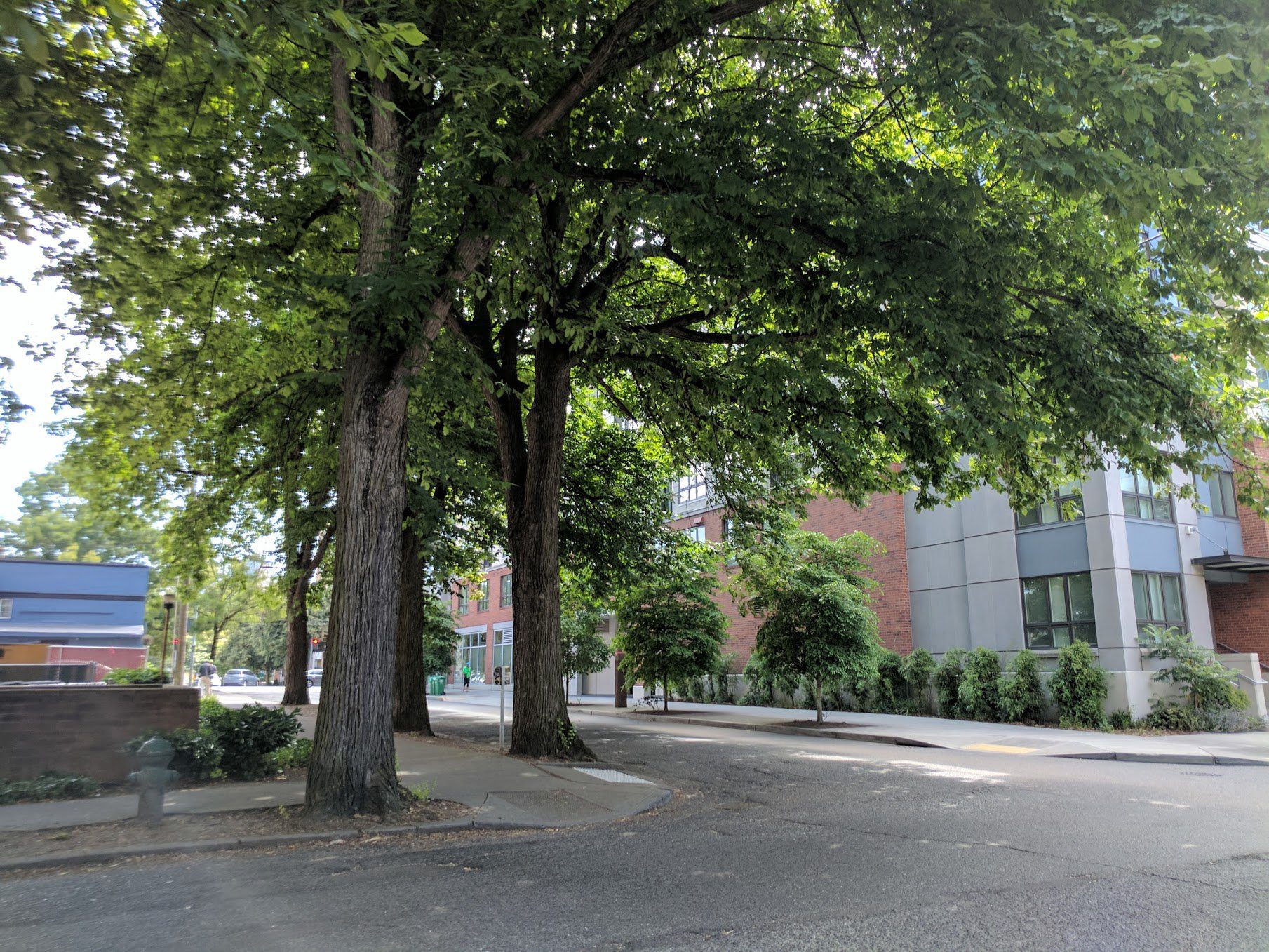 Large trees on the corner of Harvard Ave E and E Mercer St in Capitol Hill. Photo: SDOT.
Large trees on the corner of Harvard Ave E and E Mercer St in Capitol Hill. Photo: SDOT. Blog stats: 1,300 words | 7-minute read
At-a-Glance:
- Our SDOT urban forestry team recently completed our annual street tree analysis for 2022.
- From producing oxygen to reducing air pollution, these mighty trees provide many benefits and help us advance the City’s robust climate goals.
- In 2022 alone, Seattle’s 170,000+ street trees:
- Covered 900+ acres of landRemoved nearly 30 tons of air pollutionStored 50,000+ tons of carbon dioxideProduced 4,000+ tons of oxygen
- Kept Puget Sound waterways clean by soaking up 10 million+ gallons of rain water
- Our urban forestry team works year-round to maintain, preserve, and keep track of our city’s street trees. At the same time, residents and private land owners are typically responsible for maintaining the street trees in front of their property. Read more.
- We also plant new street trees throughout the city, and some of our tree-planting efforts are detailed in this blog post, many of which are funded by the voter-approved Levy to Move Seattle and our Tree Trimming and Planting program.
- We also encourage you to check out this interactive tree inventory map.
In addition to beautifying an area, urban forests play an important role in combatting pollution and creating cleaner air and water. We recently completed our annual street tree analysis for 2022, which reaffirmed the many benefits of Seattle’s urban forests. The team also took a comprehensive inventory of the many different types of street trees that grow in our city.
What is a street tree?
Street trees include all the trees planted on public streets and sidewalks. This includes about 40,000 trees planted by SDOT, as well as trees planted and maintained by the public. It does not include trees planted in parks or private property. You can learn more on our street trees web page.
From producing oxygen to reducing air pollution, trees offer a wide range of environmental and health benefits! They also help advance the City’s climate goals, including areas identified in the Mayor’s 2023 One Seattle Tree Plan Executive Order.
Alongside proposed legislation to strengthen the City’s Tree Ordinance, the Executive Order will protect and grow a healthy tree canopy citywide while also addressing inequities in canopy distribution disproportionately impacting historically underserved communities across Seattle.
Seattle’s street trees – 2022 highlights “by the numbers”
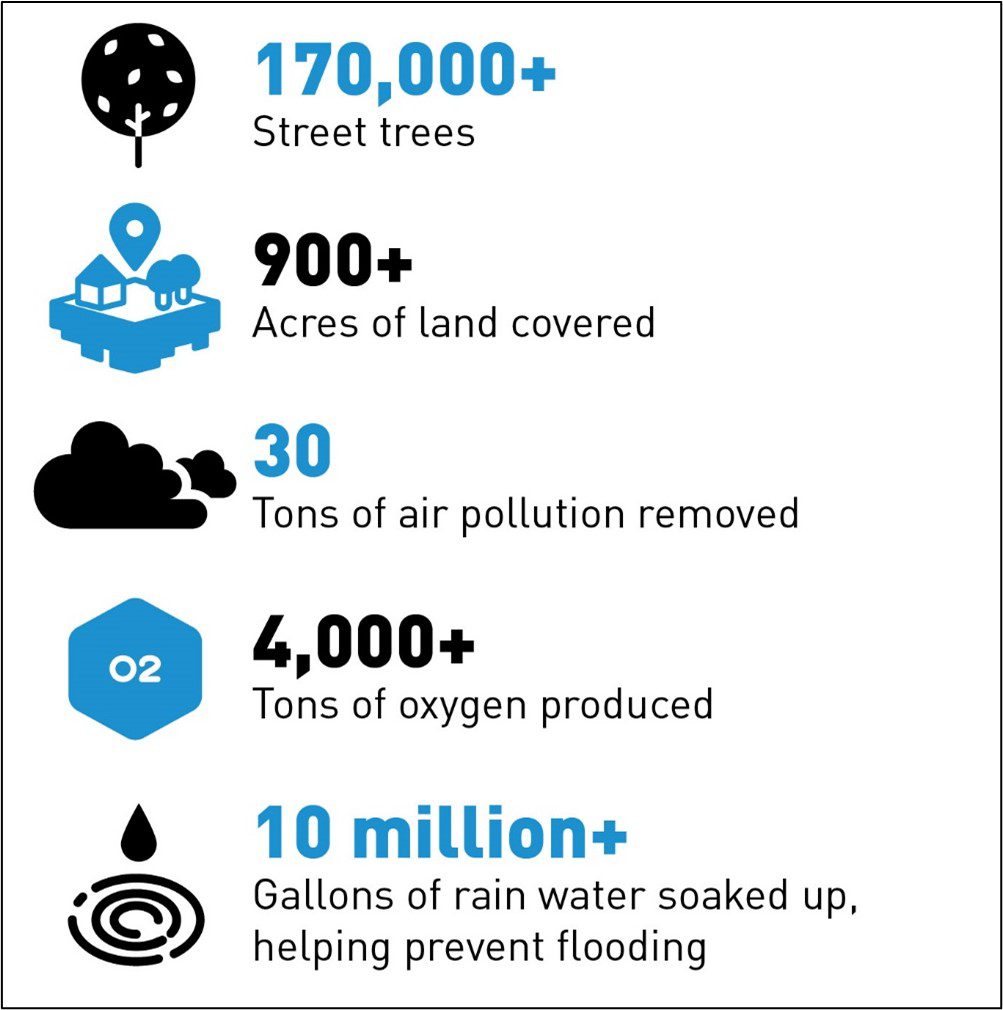
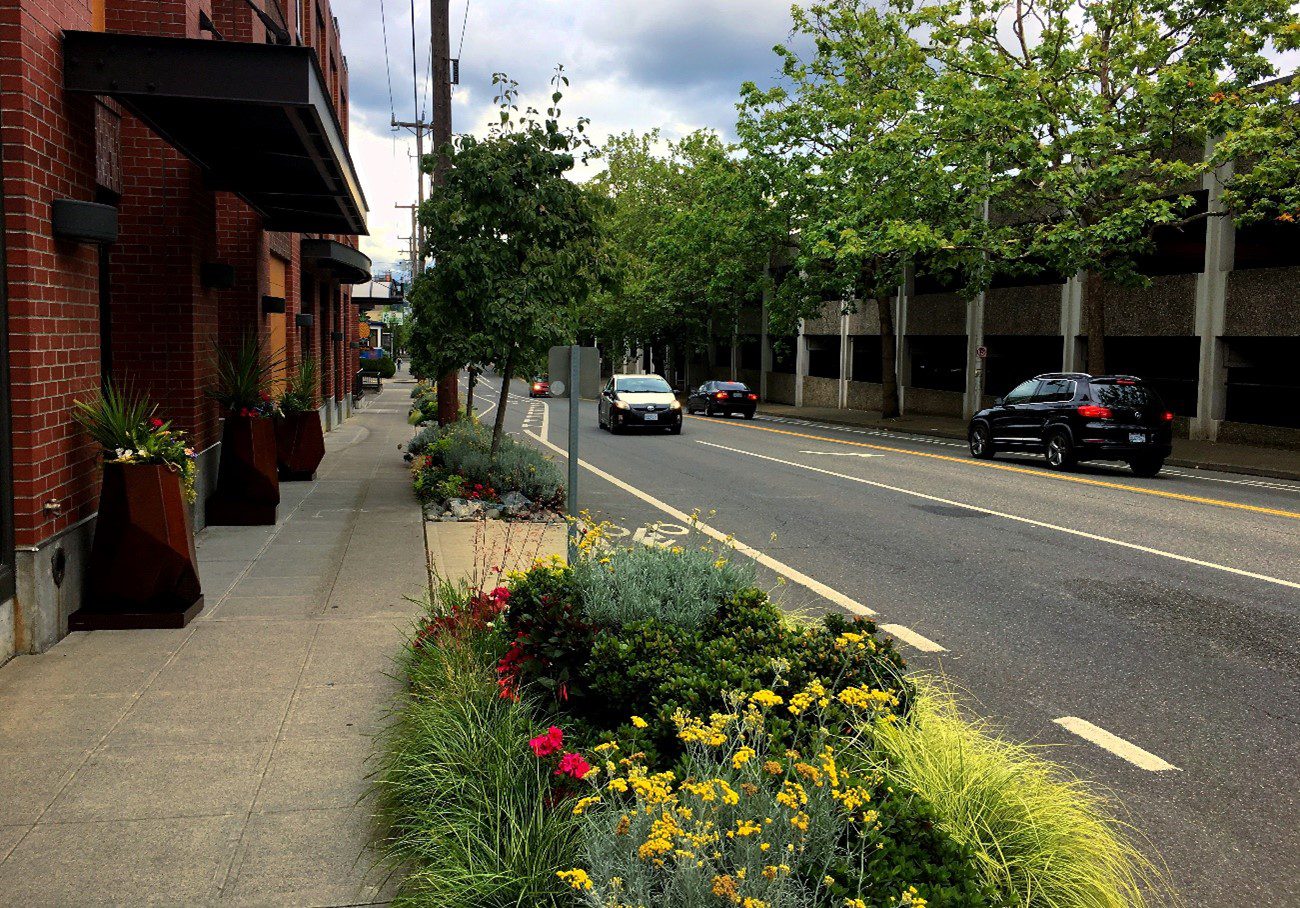
Street tree benefits
Removing air pollution
Using data collected in the field, estimates show that Seattle’s street trees alone removed nearly 30 tons of air pollution from the atmosphere last year. The trees are most successful at removing particulate matter less than 2.5 micrometers (PM2.5), which is the type of pollution that causes smog and is most harmful to human health, causing a variety of heart and lung diseases.
Fighting climate change
Trees take in carbon dioxide from the air around them, which helps reduce climate change. Caring for healthy urban forests is one of the ways we can address climate change, along with encouraging people to get around without driving. By ensuring our trees are growing and healthy, we can help keep down the levels of carbon dioxide in Seattle.
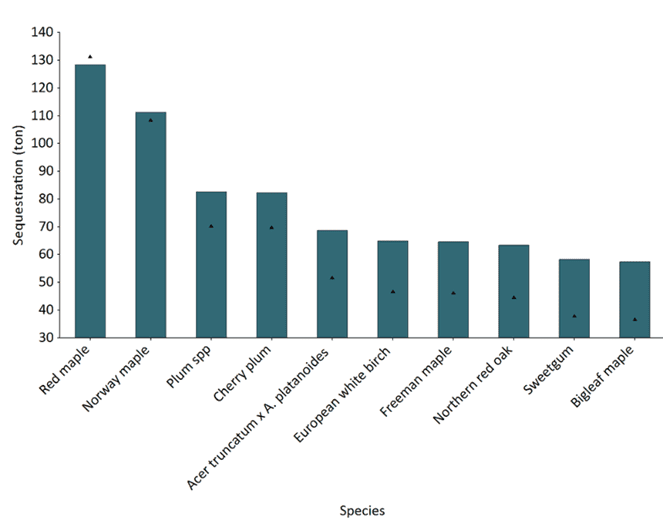
Producing oxygen
One of the biggest benefits of trees is the fact that they produce oxygen, which we need to live healthy lives. In our 2022 street tree analysis, we found that the trees in Seattle produced about 4,000 tons of oxygen last year. The city’s red maple trees were the top producers of oxygen last year.
Keeping water clean
Trees soak up rain water and their leaves slow rain as it falls, which can help minimize flooding and also keep Seattle’s water clean. Stormwater runoff can be a cause for concern in many urban areas as it can contribute to the pollution of streams, wetlands, rivers, lakes, and oceans. When it rains, pollution such as car oil, chemicals, and other substances can be carried into our waterways.
Street trees are especially important because they are surrounded by asphalt and concrete which do not absorb rain water. Vegetation such as trees and shrubs act as a sort of filter for this ground pollution, thanks to their root systems in the soil. Our trees in Seattle helped reduce over 10 million gallons of stormwater runoff from entering our waterways.
Cooling our environment
Trees are essential for helping cool our city. They can reduce urban heat island effects, and provide shade that cools homes and neighborhoods, especially during extreme heat events. Adding to the tree canopy in our city can help reduce ambient temperatures. The recent 2021 Tree Canopy Assessment details the state of Seattle’s tree canopy, its benefits, and how we can improve coverage across the city.
Supporting energy efficiency
Trees can even help with our energy consumption throughout the year. In the summer months, trees provide shade, which can help lower costs for air conditioning. During the winter, trees can effectively block wind which might seep through windows and doors that aren’t fully sealed. This wind-blocking power can help reduce heating needs.
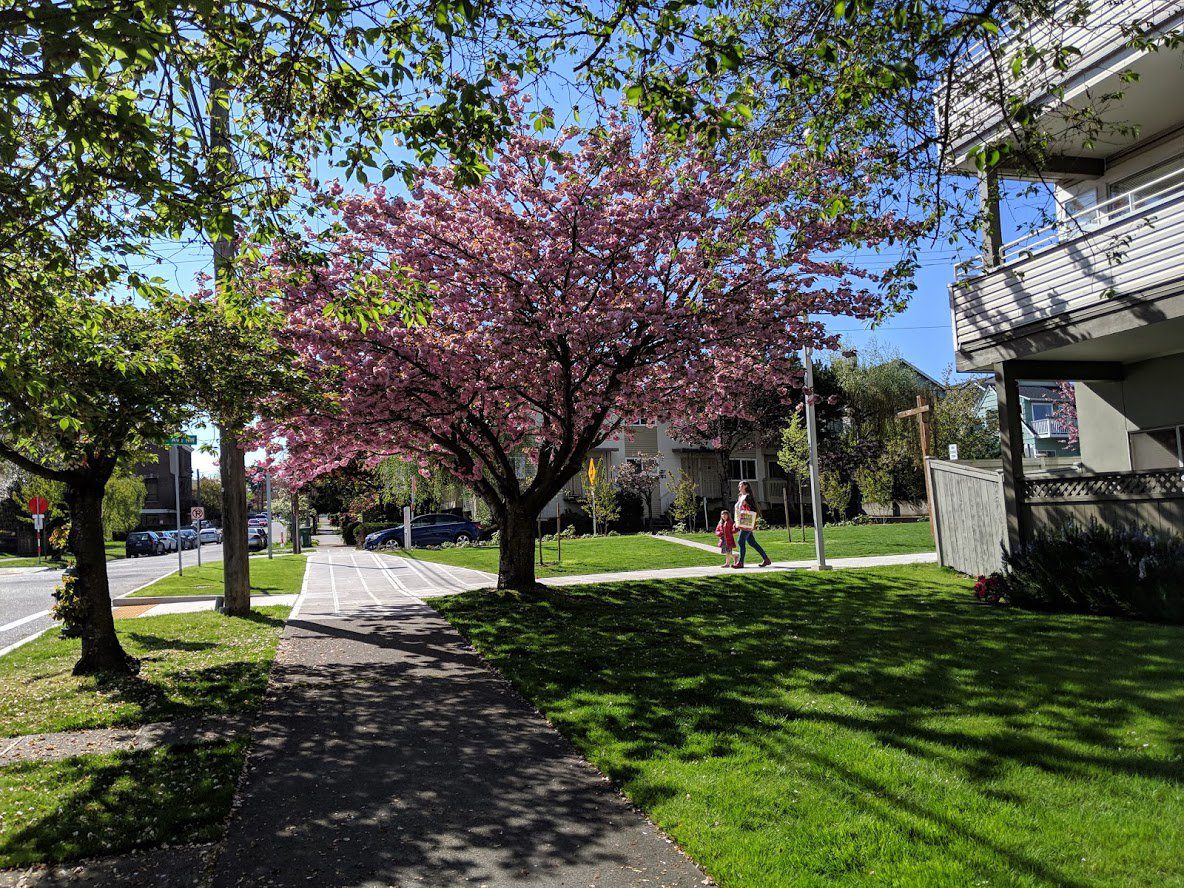
Our urban forestry team works year-round to maintain, preserve, and keep track of our city’s trees.
The SDOT Urban Forestry team administers, maintains, protects, and expands the city’s urban landscape in the public right-of-way to maximize economic, environmental, safety, and aesthetic benefits. This team addresses three main categories of forestry work:
- Reviewing and issuing street tree permits
- Managing trees and potential effects from construction
- Direct maintenance of trees and landscaping along our streets*
*Note: the City of Seattle is only responsible for the maintenance of a portion of the trees in the city. In most cases, this responsibility belongs to the neighboring property owner. If a street tree was planted by the City, it is owned and maintained by the City, usually by SDOT. If a street tree was planted privately, the adjacent property owner is responsible for all maintenance, including pruning.
We also work on significant tree planting efforts in Seattle. These have recently included:
- We’ve planted nearly 2,700 trees since 2016, thanks to the voter-approved Levy to Move Seattle.
- As part of the Home Zone program, we planted 300 trees in the neighborhoods of South Park, Georgetown, and Highland Park (about 100 trees per neighborhood). This previous blog gives a good snapshot of the tree planting effort that occurred in South Park.
- Many specific projects also include tree plantings. For example, we are planting over 450 trees in the area around the new John Lewis Memorial Bridge (connecting North Seattle College and surrounding communities to the Northgate light rail station).
- Lastly, the Trees for Neighborhoods program distributes 1,000 trees for planting every year. (This includes both trees on SDOT public right-of-way, private property, and schools).
Below are several photos of our urban forestry team in action planting trees in Seattle.
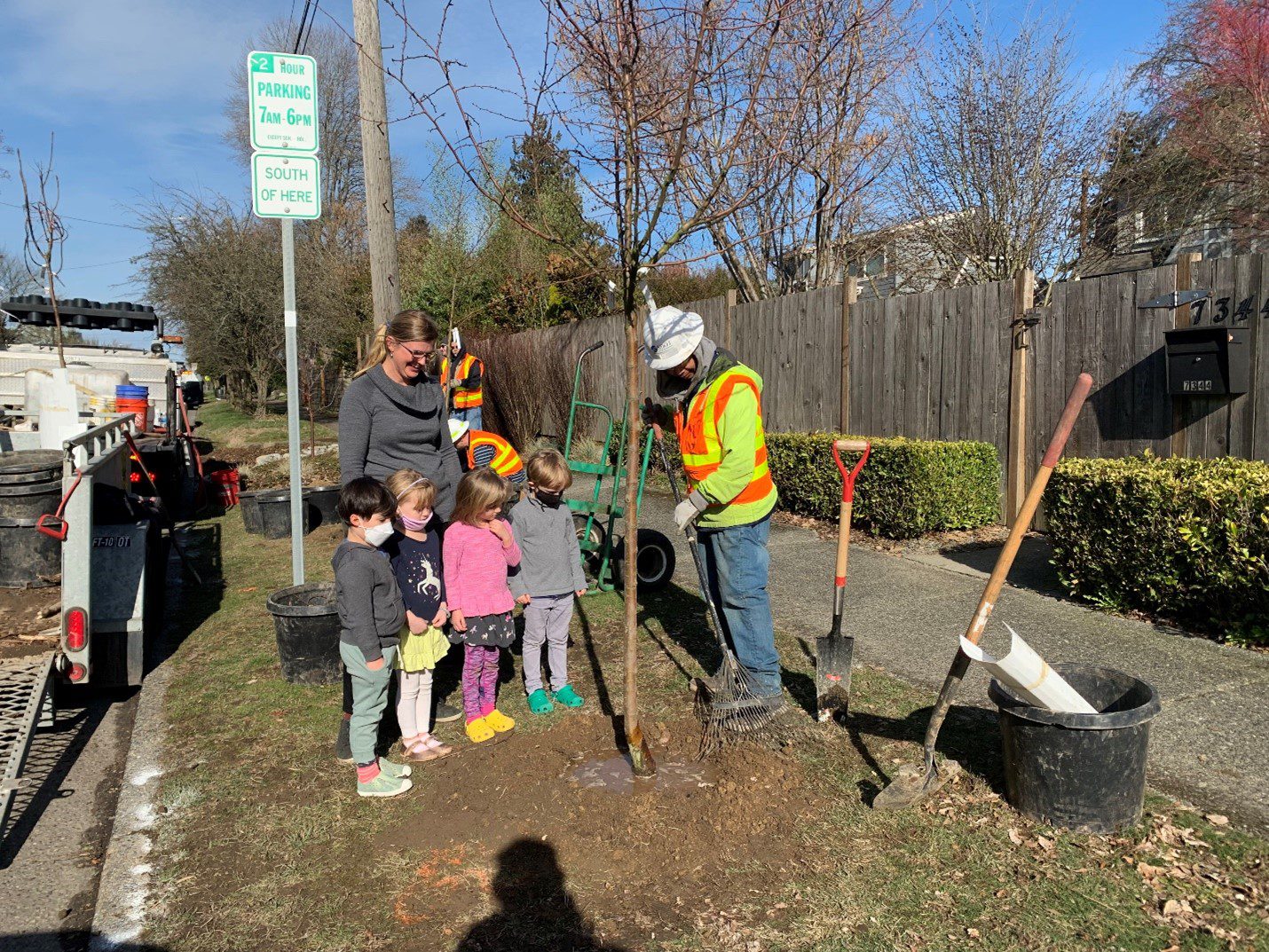
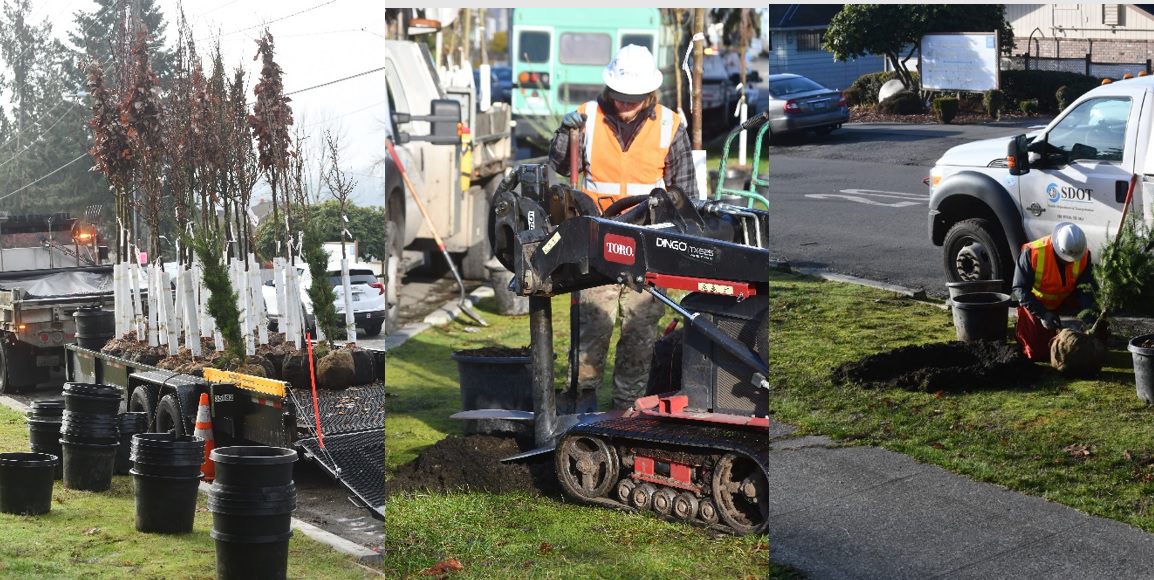
The team also works to upkeep the city’s street tree inventory. We have created an interactive tree inventory map that shows where Seattle’s street trees are located and provides additional information such as size and what type of tree they are.
Have questions about Seattle’s street trees? Send us an email to seattle.trees@seattle.gov or visit our website.
